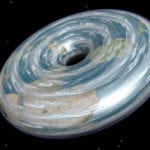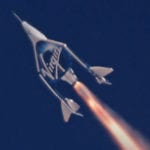 Religion
Religion  Religion
Religion  Weird Stuff
Weird Stuff 10 Horrifying Final Destination-Like Accidents
 Movies and TV
Movies and TV 10 Music Biopics That Actually Got It Right
 History
History 10 Momentous Events That Also Occurred on July 4th
 Animals
Animals 10 Times Desperate Animals Asked People for Help… and Got It
 Movies and TV
Movies and TV 10 Movie Flops That Found Their Way to Cult Classic Status
 History
History 10 Things You Never Knew About Presidential First Ladies
 Movies and TV
Movies and TV 10 Zombie Movies That Will Actually Terrify You
 Humans
Humans 10 Times Scientists Were Absolutely Sure… and Absolutely Wrong
 Our World
Our World 10 Pivotal Moments for Life on Earth
 Religion
Religion 10 Innovations and Discoveries Made by Monks
 Weird Stuff
Weird Stuff 10 Horrifying Final Destination-Like Accidents
 Movies and TV
Movies and TV 10 Music Biopics That Actually Got It Right
Who's Behind Listverse?

Jamie Frater
Head Editor
Jamie founded Listverse due to an insatiable desire to share fascinating, obscure, and bizarre facts. He has been a guest speaker on numerous national radio and television stations and is a five time published author.
More About Us History
History 10 Momentous Events That Also Occurred on July 4th
 Animals
Animals 10 Times Desperate Animals Asked People for Help… and Got It
 Movies and TV
Movies and TV 10 Movie Flops That Found Their Way to Cult Classic Status
 History
History 10 Things You Never Knew About Presidential First Ladies
 Movies and TV
Movies and TV 10 Zombie Movies That Will Actually Terrify You
 Humans
Humans 10 Times Scientists Were Absolutely Sure… and Absolutely Wrong
 Our World
Our World 10 Pivotal Moments for Life on Earth
10 Game-Changing New Space Vehicle Concepts
The most exciting concepts are usually the ones farthest from fruition. But if our forebears didn’t explore the unlikely, we never would have skipped across the Sea of Tranquility or smashed protons into dust. Similarly, if we don’t embrace the unlikely today, we’ll never be able to experience the outer planets or open theme parks on Mars.
10Swarm Flyby Gravimetry

While most satellites are growing larger, aerospace engineer Justin Atchison proposes going smaller—far smaller. And he’s been awarded a Phase I grant from NASA to develop his proposed Swarm Flyby Gravimetry. That sounds incredibly ominous, but the swarms are actually schools of adorably tiny probes. This was among 12 projects to receive NASA’s tentative blessing at a recent symposium for advanced exploratory concepts.
The swarms are perfect for studying some of the smallest bodies in our solar system. These bodies’ near-nonexistent gravity has left them uncharted. Without gravity acting as the metaphorical string between ball and paddle, they shoot off past each other at quite some speed. Tiny robots offer a solution. And Atchison wants to chuck them at small asteroids.
It’s difficult to ascertain the masses of minuscule space chunks. So a larger mother probe will fire a buckshot of reflective baby probes directly into an asteroid’s face. The many, scattered flight paths of the nanoprobes will be digitally combined to extrapolate the body’s gravitational field. And it’s super-efficient, as a single batch of cheap nanoprobes performs the job of many conventional flybys. The data surrendered by the tiny asteroids provides chemical signatures and clues about inner structures.
9TALISE: Paddle Boats On Titan

Even though Europa and Mars get most of the love in the search for aliens, Saturn’s largest moon, Titan, may quietly house the most interesting aliens of them all. Europa has a saltwater ocean, and we know early Mars could have passed for adolescent Earth. But at – 180 degrees Celsius (–290 °F), Titan’s seas have swapped water for liquid hydrocarbon. So if any life-form arose in this absurd environment, it would have a unique structure.
Conventional rovers don’t get their feet wet. So to find these scary life-forms, we need to ply the methane seas with a paddleboat. Designed by a cooperative of Spanish engineers and astrobiologists, TALISE looks ripped out of a Playskool catalog. Yet its destiny lies at the heart of Titan’s second-largest sea, Ligeia Mare. Formally the Titan Lake In-situ Sampling Propelled Explorer, TALISE weighs over 100 kilograms (220 lb) and would be good for a six-month mission.
There’s no launch date yet, as the creators are still deciding on a propulsion system. Though after much culling, they’re down to three options: smooth wheels, paddles, or corkscrews. Sadly, all the coolest options were already deemed infeasible. So don’t get too excited at the prospect of tank treads, propellers, and hover jets.
8Mars Helicopter
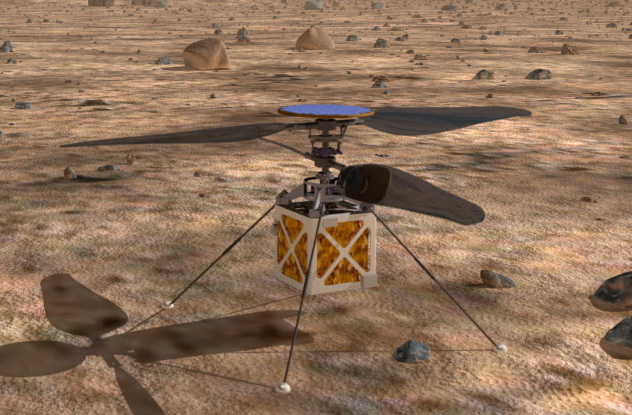
Countless rover concepts have been proposed over the years. So have almost as many propulsion systems, including rolling, bouncing, burrowing, and even swimming.
But we haven’t seen many flying rovers—until now. By introducing another plane of movement into the space exploration equation, a ground-based rover’s daily driving range can be increased threefold. But the Mars helicopter won’t force its wheeled brethren out of their jobs since it’s more of a supplemental vehicle. NASA’s “little helicopter that could” is ultra-portable—it’s about 1.2 meters (4 ft) across at its blade tips and weighs a bit over 1 kilogram (2 lb). The chopper’s primary duty is to act as autonomous scout, exploring well in advance of its surface rover.
Getting a billion-dollar vehicle stuck against a rock over 50 million miles away is a huge problem, and behind-the-scenes planning is responsible for every red inch the current rover gains. But a flying recon vehicle could quickly pick out the clearest path for its plodding rover partner, sparing its human handlers a lot of trouble. From its lofty perch, the copter could survey areas of interest not visible from the ground, spotting oddly shaped rocks for eventual rover-pickup.
The most exciting part is that NASA hopes to have a fully operational prototype within three years. So if all goes according to plan, the diminutive helicopter might just be ready in time to accompany the next Mars rover in 2020.
7Tiny Europa Sub
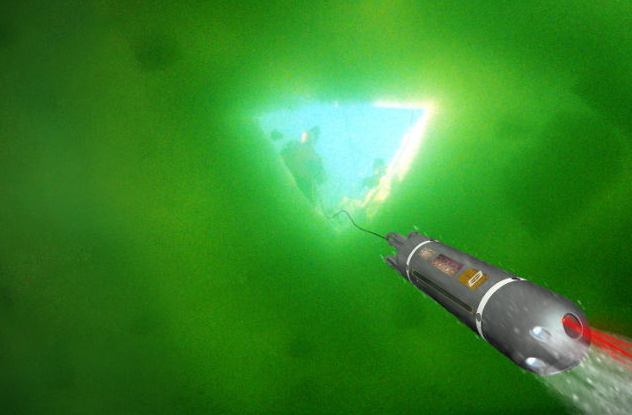
Europa is the astronomic apple of our eye. The frozen world has a tantalizingly terrestrial, salty ocean hidden underneath a stubborn icy shell. That shell is estimated to be more than 15 kilometers (10 mi) thick in some places. This poses a problem. And NASA’s solution is a . . . pipe bomb? Surprisingly, the probe pictured above is a full-service submersible, no larger than two soda cans laid end to end.
The Deeper Access, Deeper Understanding (DADU) probe is unique for several reasons, including its lightweight construction. Launching cargo into space is ridiculously costly: tens of thousands of dollars per kilogram cast into the great beyond. So a pound saved is millions of pennies earned.
Its size is also a boon. Small and smooth, it looks like it should be able to bypass thick patches of iced crust by weaseling its way through narrow fissures or crevasses. But no weaseling is necessary, as the plan calls for the lander drilling a hole through the ice and shoving its tiny buddy into the unknown.
DADU also boasts an adorably small suite of scientific instruments. The sensor used to assess temperature, conductivity, and depth is smaller than a fingernail. DADU’s sonar is slightly larger but could still easily fit inside of a matchbox.
To safely plumb Europan depths, the tiny DADU submersible remains connected to a larger craft at the surface via a long and flexible tether. This lifeline ensures that the lander can continuously nourish DADU, keeping its lithium-ion battery topped as it searches for Europan squid.
6Disco Ball In Space
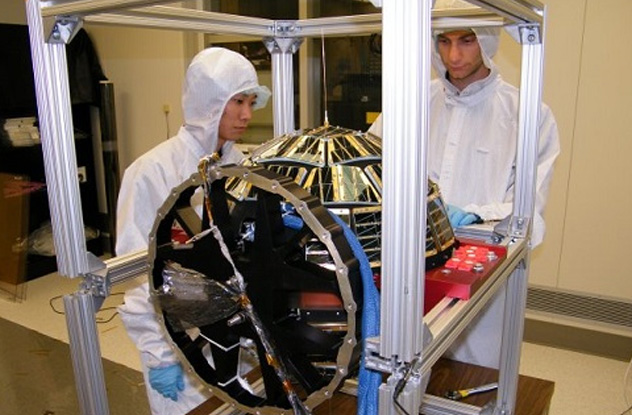
Behold the bedazzled space ball. Dreamed up by University of Colorado Boulder students, the Drag and Atmospheric Neutral Density Explorer, or DANDE, was the victorious entrant in a contest for experimental space curios. This psychedelic disco ball was made to bobble about the thermosphere (the penultimate layer of our atmosphere) assessing drag forces at altitudes of 320–480 kilometers (200–300 mi).
Density calculations are sometimes off by as much as 21 percent. That’s quite an inconvenience when trying to coordinate satellites zipping across low-Earth orbit at breakneck speeds. The equivalent of a cosmic fishing bob, DANDE tracks spatial and temporal variables in real time and relays the information wherever necessary.
After six years of tinkering, the 150 CU students involved in the project saw their dreams come true on September 29, 2013, when SpaceX’s Falcon-9 rocket successfully delivered DANDE and several other small satellites into their intended orbits.
5Bigelow Space Habitats
Bigelow Aerospace is a privately funded (mostly by founder Robert Bigelow) start-up specializing in the space habitats of the future. The blimp-like structures aren’t pretty, but in space, aerodynamics is merely a formality, and your craft can be as ugly as you wish it to be. Plus, what the Bigelow capsules lack in aesthetics, they more than make up for in useful metrics—such as space. And an ability to deflate.
The larger Bigelow BA 330, in development, absolutely beats the ISS Destiny capsule in terms of volume. It has a length of 14 meters (45 ft), compared to the Destiny’s 8 meters (28 ft), so prospective astronauts could play a half-court pickup game. Its boasts 330 cubic meters (12,000 ft3), giving astronauts such terrestrial comforts as separate bedrooms. It owes its spaciousness to central storage, and important tools are located at the center of the habitat, instead of along the walls like in the ISS.
On Earth, it’s prepared as a tiny package. But in space, it poofs up like a microwaved marshmallow, making it easily deployable. Bigelow plans to connect two of these vehicles and rent the space out as a miniature, commercial space station. One odd problem is that the 330 might be too large. Astronauts inside could find themselves hovering too far from any of the walls an unable to push a wall to propel themselves, leaving them stranded in place. But the 330 houses six astronauts, so a buddy should always be able to come help.
Oh, and since Bigelow Aerospace is a private company, you can buy your ticket today—at only $25 million a pop.
4The 100-Year Starship
Earth is great. But to become an advanced civilization, we must cast off our terrestrial shackles and seed the cosmos. It may seem infinitely far off, yet some are already planning a most excellent interstellar adventure.
The 100-year starship program (100YSS) has already received monetary blessings from both NASA and DARPA, with the latter throwing down a cool million to get us off of Earth. The project is championed by former NASA astronaut Mae Jemison, the first African-American woman in space. It’s also won the support of several reputable institutions, including from the alien hunters at SETI.
The goal is to make interstellar travel feasible within 100 years. Those behind it maintain that this is no more outlandish than H.G. Wells’s 1901 suggestion of a Moon landing, and no more than 70 years after that time, American astronauts were playing golf on the lunar surface.
One option is to herd multitudes of willing explorers onto a gigantic ship aimed at the stars. One such concept was designed in the ’70s and dubbed “Daedalus.” Comparable to a Nimitz aircraft carrier in size, this fusion-fueled cosmic ark would roam the galaxy, searching for an acceptable spot to establish Earth II.
3SOAR
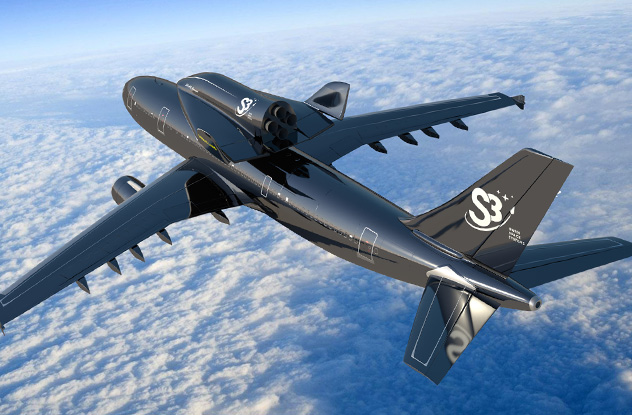
Europe’s foremost satellite builder, Franco-Italian Thales Alenia Space, is teaming up with Swiss Space Systems to offer a new private option for high-altitude flight. Aesthetically, the SOAR is more plane than spaceship and must piggyback on a hulking Airbus A300 jumbo jet before firing itself into sub-orbit. Initially drawn up as an unmanned satellite delivery drone, the sleek craft is being repurposed for humans.
Sadly, we won’t be hitching rides on the blacked-out plane anytime soon since the Swiss wish to reap scientific reward before ferrying wealthy space tourists. Instead, the $290 million SOAR offers a wonderfully unique platform as a microgravity laboratory. Tests typically reserved for the ISS and outer-Earth fringes can now be conducted more frugally as the plane cycles through parabolic dips. And satellites can be launched into orbit (though the aircraft itself never reaches these rarified airs) at one-quarter of the cost.
SOAR’s winged anatomy allows it to glide back down to Earth after missions like a plane, gifting it a reusability envied by most other space vehicles. Eschewing the traditional rocket format also drives down mission costs significantly because the tiny plane isn’t powered by vast payloads of fuel.
2Nautilus-X
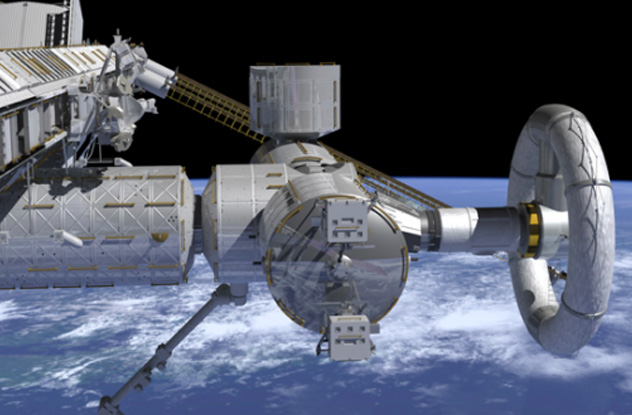
NASA’s Nautilus X looks like it was assembled from random pieces of dishware pulled out of the sink, but the patchwork shuttle can quite comfortably house a crew of six for missions lasting up to two years. The DUPLO-inspired Nautilus boasts interchangeable modules that can be swapped to meet the demands of a wide range of missions.
And even though the Non-Atmospheric Universal Transport Intended for Lengthy United States Exploration (Nautilus-X) sounds as unwieldy as it looks, it’s a highly versatile and mobile space station that can ferry crews throughout the solar system. Sadly, it won’t be able to touch down on planetary surfaces, and astronauts must be valeted to and fro if they want to splash around in Moon dust.
Nautilus may not be the prettiest spacecraft, but it’s cheap. At $3.7 billion, it roughly matches the combined costs of the tiny Curiosity rover and Rosetta probe. That’s a relative steal, since Nautilus could serve as successor to the $150 billion International Space Station.
Its defining feature is the donut around its waist. The centrifugal ring will spin to produce artificial gravity. Though not as strong as Earth’s, it’ll keep astronauts rooted to the floor. The centrifugal force also protects spacefarers from a variety of physiological problems brought on by microgravity.
1Venus Cloud City

Our sister planet Venus wasn’t always a molten ball of hell. Life might have flourished there billions of years ago. And it might once more if NASA’s “cloud city” concept comes to fruition. And since Venus is closer to us than Mars, a trip there offers us a chance to shed our cosmic training wheels before our big push for the red planet.
NASA’s aerial communities will float 50 kilometers (30 mi) above the Venutian surface. At these altitudes, the conditions quickly approach those on Earth. In fact, you’d be hard-pressed to find a better substitute anywhere else in the solar system, according to mission planners.
Up here, pressures are no longer crushing, and temperatures are almost terrestrial. It’s around 75 degrees Celsius (167 °F), which is far from the Venus surface’s 425 (800 °F). Plus, Venutian colonists will be protected from lethal solar radiation.
Lighter than air, blimp-like aircraft could easily remain aloft for the duration of a 30-day mission, and a full round-trip will take over a year. However, the whole plan is complicated by the spaceship’s inability to ever land. The ground is hot lava, and the craft must stay far above the surface or its delicate instruments could be destroyed.
That’s tough when your ship is zooming at 7,250 kilometers (4,500 mi) per hour. But after the parachutes (hopefully) deploy, it’ll be smooth sailing. Robotic arms will unfurl the folded blimp and pump it full of helium. This way, we can colonize a planet without getting anywhere near the ground.





